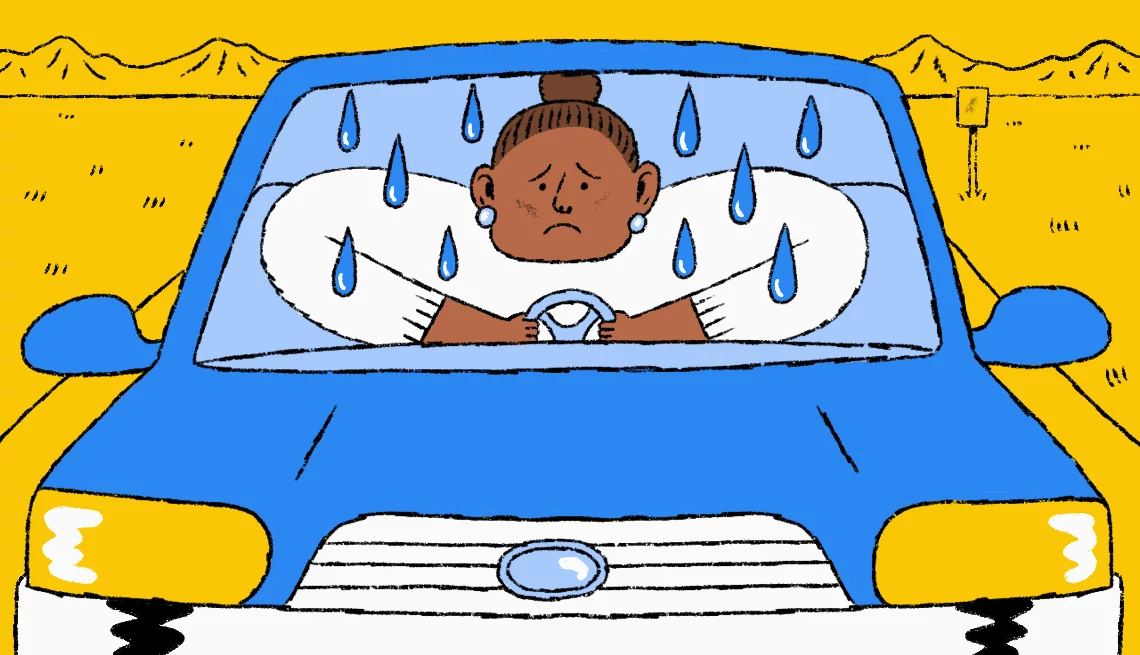AARP Hearing Center


While I enjoy scenic road trips, my bladder doesn’t always cooperate. During a recent drive to the mountains, the urge to pee got so intense that I felt physically uncomfortable. By the time I asked my husband to find the closest rest stop, traffic was at a standstill and there was no exit in sight for miles.
My anxiety peaked as I wondered if I could hold it any longer. I started visualizing how I was going to hop out of the car and go on the side of the road but couldn’t figure out how to do that safely. Although by some miracle we made it to a bathroom in time, I knew that I needed a better plan for future excursions. With an estimated 50 percent of adult women in the United States experiencing some form of urinary incontinence — most commonly among older women — this scenario is not unique. Being trapped in a car without a bathroom nearby can be both inconvenient and traumatic. Fortunately, there are many ways to tackle an overactive bladder, leakage or urgency incontinence on the go so you can still get out and explore with confidence and ease.
Plan your trip carefully
Sherrie Palm, founder and CEO of the Association for Pelvic Organ Prolapse Support, recommends planning your trip around bathroom breaks every two to four hours, or whatever time frame works best for you. Refer to apps like Google maps, USA Rest Stop Locator, Flush Toilet Finder & Map and Toilet Finder to map out your route.
Be smart about packing too. Don’t leave home without extra underwear, a change of clothes, absorbent pads, hand sanitizer, wipes, tissues or toilet paper and a plastic bag for dirty items. Palm also recommends purchasing incontinence bed pads that can be put on the car seat to feel more emotionally secure.
Watch what you eat and drink
In the days before the trip, be mindful of your food and drink choices since some can aggravate the bladder. Drinks with caffeine — including coffee, tea and many sodas or sport drinks — can irritate the bladder causing it to become overactive, Palm says. “Artificial sweeteners are very irritating to the bladder.” Other common irritants include alcohol, carbonated beverages, chocolate, preservatives and spicy foods. Instead, choose bladder-friendly foods high in omega-3 fatty acids and low in acidity and caffeine.
It’s also a good idea to limit your liquid intake before traveling. According to Sarah Boyles, M.D., of The Women’s Bladder Doctor, the standard recommendation is to drink about 64 ounces a day. “Normally we tell people that you should urinate every three to four hours,” she explains. But it’s OK to drink less while traveling, as long as you don’t get dehydrated. “You don’t want to be so dry that you’re getting headaches or you’re dizzy when you stand up … but you can absolutely minimize fluid and it’s not going to hurt you.”
To best understand your body before taking a trip, Boyles suggests writing down your symptoms, bathroom frequency and diet. “I am a strong believer in having people journal their symptoms. If you’re someone who’s starting to have a little bit of urgency and frequency, writing down what you’re drinking in a day and when you get symptoms helps you figure out what your triggers are [so] you [can] avoid all of those things in the car ride.”































































More on Health
Doctor, How Can I Avoid Having to Pee All the Time?
Physician has advice to help with frequent urinationGive Your Urine a Passing Glance
Changes can signal health issues
9 Strategies to Stop Peeing So Much
What you can do to slow the flowRecommended for You